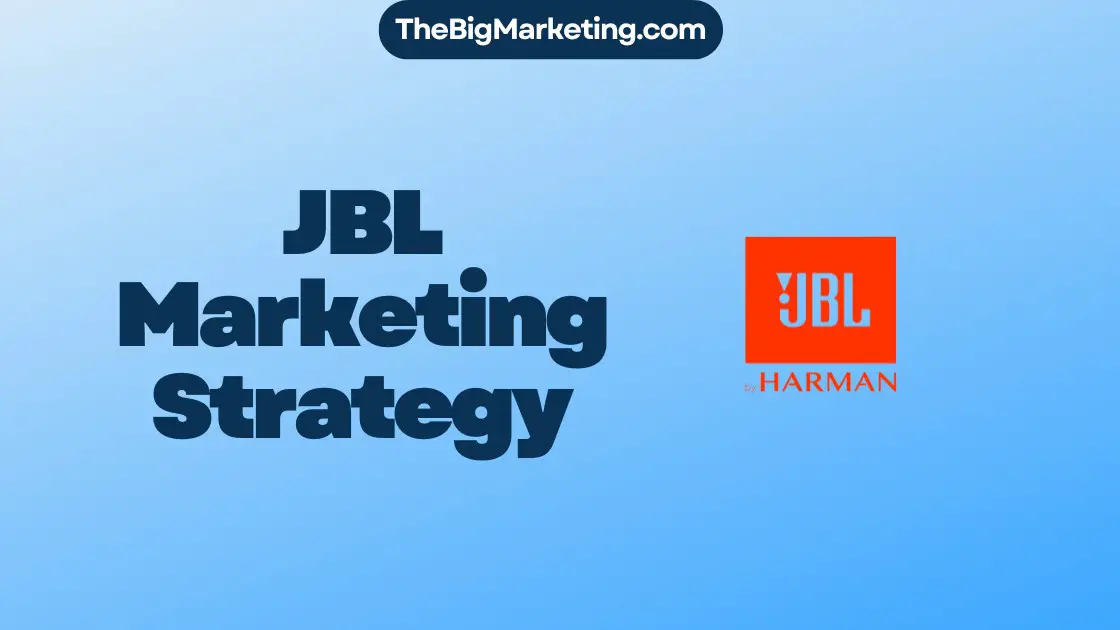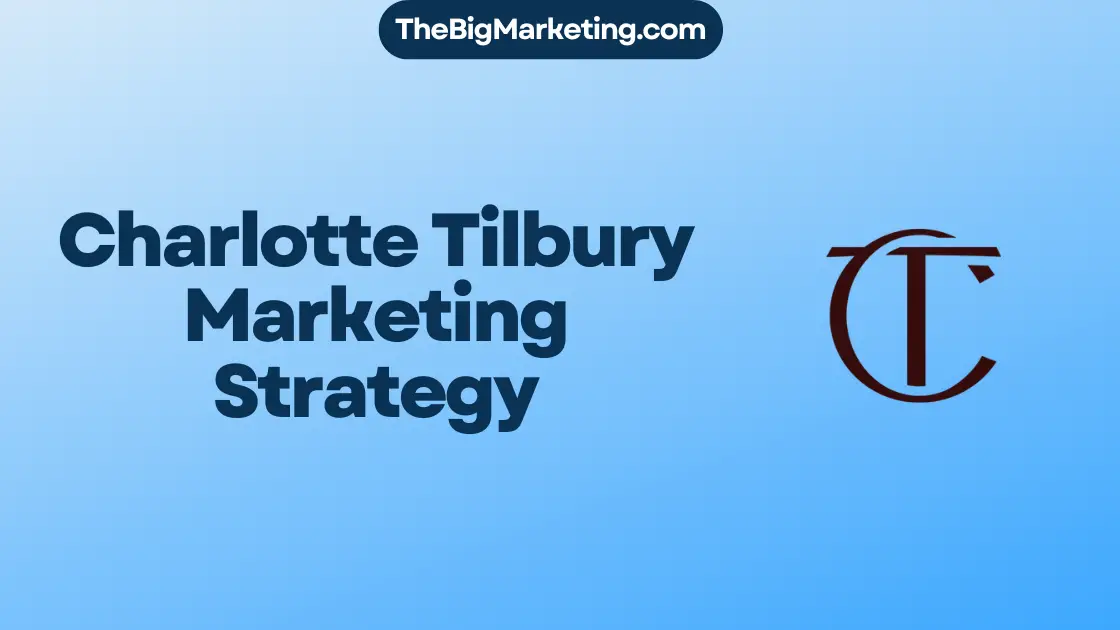Cold email marketing is a proven and reliable method for boosting outreach and conversion rates. In 2024, it remains a valuable tool for businesses looking to connect with potential customers and generate leads. Creating a successful cold email marketing strategy requires careful planning and execution. This comprehensive guide will walk you through the essential steps to develop an effective cold email marketing strategy.
Key Takeaways:
- A successful cold email marketing strategy can significantly boost outreach and conversion rates.
- Personalization is vital in cold email marketing, as it helps establish a connection with recipients.
- Optimizing email campaigns and improving email deliverability are crucial for maximizing the success of cold email outreach.
- Following best practices, such as crafting compelling subject lines and using clear call-to-action (CTA), enhances the effectiveness of cold email campaigns.
- Choosing the right cold email marketing services with features like email automation and analytics can streamline your efforts and deliver better results.
What is Cold Email Marketing?
Cold email marketing involves the practice of sending unsolicited emails to individuals or businesses without any prior connection. These emails are an effective way to establish new business relationships and generate leads, even though they are unsolicited. Unlike other forms of email outreach, cold emails are designed to initiate conversations with individuals who have not shown interest in your business. Crafted properly, cold emails can open doors to potential collaborations and opportunities for lead generation.
In this guide, we will provide insights and best practices for crafting successful cold emails. We’ll explore strategies to make your cold emails impactful, engaging, and personalized. With the right approach, cold email marketing can be a valuable tool in your overall marketing strategy.
Let’s dive in and learn how to leverage cold email marketing to grow your business.
Cold Email Campaign Preparation
Before launching a cold email campaign, thorough preparation is key to its success. This section will guide you through the crucial steps of lead research, using email finder tools, lead generation, and the verification process, ensuring your cold emails reach the right recipients.
Lead Research
In order to build an effective email list for your cold email campaign, it’s important to conduct thorough lead research. This involves identifying your target audience and gathering relevant contact information, such as email addresses. Lead research allows you to segment your prospects and personalize your cold emails accordingly, maximizing their impact.
Email Finder Tools
There are various email finder tools available that can facilitate the process of finding email addresses for your cold email campaign. These tools leverage publicly available information and databases to retrieve contact details associated with your target audience. By using email finder tools, you can save time and effort in manually searching for email addresses.
Lead Generation
Lead generation is the process of identifying potential customers who are likely to be interested in your products or services. It involves gathering information about individuals or companies who fit your target demographic and have expressed a need or interest in your industry. Lead generation is vital for cold email campaigns as it ensures you are reaching out to qualified prospects who are more likely to engage with your emails.
Verification Process
Before sending out your cold emails, it’s crucial to verify the validity of the email addresses you have gathered. Using an email verification tool, you can check if the email addresses are deliverable and avoid wasting your campaign on invalid or inactive email accounts. The verification process improves the deliverability and effectiveness of your cold email campaign, increasing the chances of reaching your target audience.
By meticulously preparing for your cold email campaign through lead research, utilizing email finder tools, generating qualified leads, and verifying email addresses, you set the foundation for a successful outreach strategy. The next section will explore the importance of personalization and engagement in cold email marketing.
Personalization and Engagement
Personalization plays a vital role in successful cold email marketing. To ensure your cold emails are effective, it is crucial to conduct lead research and gather relevant information about your recipients. This research enables you to personalize your emails by addressing their pain points and incorporating them into your email copy.
Identifying and addressing pain points not only demonstrates that you understand your recipients’ needs but also shows that you have a solution to their challenges. By tailoring your message to their specific pain points, you can grab their attention and increase the chances of engagement.
In addition to addressing pain points, mentioning shared interests or recent company events can further enhance engagement. This shows that you have taken the time to research and connect with the recipient on a personal level, increasing the likelihood of a positive response.
How to Personalize Cold Emails:
- Conduct thorough lead research to gather information about your recipients’ pain points and interests.
- Segment your email list based on key characteristics or pain points.
- Craft personalized email templates with relevant content tailored to each segment.
- Use the recipient’s name and company in the email to create a personalized touch.
- Include references to shared interests or recent company events to establish common ground.
- Highlight the specific pain points your product or service addresses and how it can benefit the recipient.
By following these personalization strategies, you can increase the engagement and effectiveness of your cold email campaigns, resulting in higher response rates and more meaningful conversations.
Crafting an Effective Cold Email Template
Creating a well-structured and engaging cold email template is essential for successful email outreach. It not only saves time but also ensures that all the necessary elements are included to make a lasting impression. A well-crafted cold email template should follow a typical structure that includes the from line, subject line, introduction, pitch, call-to-action, and signature.
The from line should clearly state the sender’s identity and establish trust right from the start. Use a professional email address and include your name or the name of your company.
The subject line plays a crucial role in capturing the recipient’s attention and enticing them to open the email. Keep it concise, personalized, and relevant to the recipient’s pain points or interests.
The introduction sets the tone for the rest of the email. It should be brief, engaging, and personalized. Addressing the recipient by name and mentioning a common connection or recent interaction can establish rapport and make the email feel more personalized.
The pitch section is where you introduce your offer or solution to the recipient’s pain points. Clearly articulate the benefits and value they will receive by choosing your solution. Make it compelling and tailor it to their specific needs and challenges to increase the chances of engagement.
The call-to-action (CTA) is a crucial part of your cold email template. It directs the recipient to take a specific action, such as scheduling a call, signing up for a demo, or downloading a resource. Make the CTA clear, concise, and time-sensitive to create a sense of urgency.
To add a personal touch, customize the template with the recipient’s name, company, or any other relevant details you gathered during the research phase. Keep the email concise, avoiding any unnecessary information that might dilute the impact of your message.
Below is an example of a well-structured cold email template:
| From Line: | John Doe – ABC Company |
|---|---|
| Subject Line: | Discover How ABC Company Can Drive Revenue Growth for [Recipient’s Company] |
| Introduction: |
Hi [Recipient’s Name], I hope this email finds you well. My name is John Doe, and I work with ABC Company, a leading provider of innovative solutions for [Recipient’s Industry]. We recently crossed paths at the [Event/Networking Platform], and I was impressed by your insights on [Topic of Discussion]. Given your expertise in [Recipient’s Role/Industry], I wanted to reach out and share an exciting opportunity that I believe can significantly contribute to your company’s growth. |
| Pitch: | At ABC Company, we specialize in helping businesses like yours drive revenue growth through cutting-edge technology and strategic solutions. Our unique approach has helped companies in [Recipient’s Industry] achieve [Specific Result/Benefit], such as [Case Study/Success Story]. With our proven track record and expertise, I believe we can make a substantial impact on your bottom line. |
| Call-to-Action: | I would love to discuss this opportunity further with you and explore how ABC Company can support your growth goals. Let’s schedule a 15-minute call at your convenience. Please reply to this email or click the link below to book a time slot: [Insert Calendly/Booking Link]. |
| Signature: |
Best regards, John Doe ABC Company Phone: [Phone Number] Email: [Email Address] Website: [Website URL] |
Remember, while using a template can save time and provide consistency, it’s essential to personalize each email based on the recipient’s specific needs and interests. Tailor the template accordingly, and make sure to follow up with recipients who show interest or engage with your initial email.
Captivating From Line and Subject Line
The from line and subject line are crucial components of a cold email that can significantly impact its effectiveness. When recipients receive a cold email, their first impression is formed based on the from line and subject line. Crafting captivating from and subject lines is essential to grab the recipient’s attention and entice them to open the email.
In order to create a captivating from line, it is important to convey who the email is from in a clear and concise manner. Use a recognizable and trustworthy name or the name of your organization to establish credibility. Personalization plays a key role in the from line as well. Incorporating the recipient’s name or any relevant information can make the email feel more targeted and increase the chances of it being opened.
Here is an example of a captivating from line:
John Smith from ABC Company: [Cold Email From Line]
The subject line is equally important as it determines whether the recipient will open the email or not. A compelling subject line should grab the recipient’s attention and make them curious to learn more. It should be concise, relevant, and personalized. Including a specific benefit or mentioning a pain point that resonates with the recipient can pique their interest.
Here is an example of a captivating subject line:
Save Time and Increase ROI with Our Email Outreach Strategy: [Cold Email Subject Line]
Remember, personalization and relevance are the keys to creating captivating from and subject lines. Tailor them to the recipient’s interests, needs, or pain points to increase the chances of your cold email being opened and read.
Introduction and Pitch
The introduction and pitch sections of a cold email play a crucial role in grabbing the recipient’s attention and conveying the value of your offer. Crafting an effective introduction requires a strategic blend of self-introduction, validation, and a seamless transition into the purpose of your outreach. The pitch section should focus on highlighting a pain point that is relevant to the recipient, presenting your solution, and outlining the numerous benefits they stand to gain by choosing your offering. Here are some guidelines and examples to help you create compelling introductions and pitches for your cold emails.
Crafting an Effective Introduction
To make a strong first impression, start your cold email with a brief self-introduction that establishes your credibility and relevance to the recipient. For instance, if you were referred by a mutual acquaintance or have a shared connection, mention it in your introduction. This can instantly build trust and improve the chances of your email being read.
Next, consider including a validation or compliment for the recipient to show that you’ve done some research and genuinely value their work. Highlight their achievements, recent projects, or industry recognition to demonstrate your interest and admiration.
After the initial rapport-building, smoothly transition into the purpose of your outreach. Clearly state why you are reaching out and what you aim to achieve through the email. Keep the introduction concise and focused on capturing the recipient’s attention, as they might receive numerous emails daily.
Crafting a Compelling Pitch
The pitch section holds the key to demonstrating how your offering can solve the recipient’s pain points and deliver tangible benefits. Start by identifying a pain point that is relevant to the recipient’s industry or specific role. Show that you understand their challenges and empathize with their situation.
Once you’ve highlighted the pain point, present your solution. Clearly explain how your product or service addresses the recipient’s needs and provides a practical solution. Focus on the unique features or qualities of your offering that set it apart from competitors.
Finally, emphasize the benefits the recipient can expect by choosing your solution. Illustrate how your offering will save them time, reduce costs, increase efficiency, or enhance their overall success. Make your value proposition clear and compelling to make it difficult for the recipient to refuse.
Remember to keep your pitch concise, persuasive, and personalized to maximize its impact. Tailor it to suit the recipient’s specific needs and frame it as an invitation to explore further discussion or collaboration. The goal is to create intrigue and interest that leads to a positive response.
Examples
| Cold Email Introduction Example | Effectiveness |
|---|---|
| “Hi [Recipient’s Name],I hope this email finds you well. My name is [Your Name], and I recently came across your impressive work on [platform/company]. As a fellow [industry], I have been following your success and admire your innovative approach to [specific area].””I am reaching out to you because I believe that our solution at [Your Company] can greatly benefit [Recipient’s Company]. We specialize in [key area of expertise], and I believe our experience and track record can make a significant impact on your [specific pain point].””I’d love to explore potential collaboration opportunities and discuss in more detail how we can help optimize your [specific pain point]. Please let me know if you’d be interested in scheduling a call or meeting to further delve into this discussion.” | This introduction introduces the sender with a compliment and validation, showcasing their understanding and admiration for the recipient’s work. It smoothly transitions into the purpose of the email and provides a clear invitation for further discussion. |
Call-to-Action and Signature
Within a cold email, the call-to-action (CTA) plays a vital role in guiding the recipient to take a specific action. A well-crafted CTA should be clear, concise, and create a sense of urgency, compelling the recipient to act promptly. It is crucial to make sure that the CTA stands out and is easily identifiable within the email. You can use imperative verbs or action words to prompt the desired response from the recipient. Here are a few examples of effective CTAs:
- “Click here to schedule a demo and discover how our solution can benefit your business!”
- “Sign up now for our free webinar and gain valuable insights into optimizing your email campaigns.”
- “Take advantage of this limited-time offer! Claim your exclusive discount by clicking the link below.”
Additionally, the signature section of a cold email provides an opportunity to further engage the recipient. A well-designed signature should include your sign-off, contact information, and any additional details that can add credibility and showcase your expertise. Consider including relevant links to your portfolio, case studies, or social media profiles to provide the recipient with more information and build trust. Here’s an example of a comprehensive signature:
Best regards,
John SmithPhone: 123-456-7890
Email: johnsmith@email.com
A well-crafted call-to-action and signature can significantly impact the success of your cold email campaign. By creating a clear and compelling CTA and including a comprehensive signature, you can increase the chances of the recipient taking the desired action and further engaging with your business.
Measuring and Optimizing Cold Email Campaigns
Measuring the success of a cold email campaign is essential for optimizing future campaigns. By tracking and analyzing key performance indicators (KPIs), businesses can gain valuable insights into campaign effectiveness and make data-driven improvements. Here are the critical metrics to monitor:
1. Open Rates
The open rate measures the percentage of recipients who open your cold email. It indicates the effectiveness of your subject line and initial impression. To improve open rates, consider using personalized subject lines and testing different approaches to capture the recipient’s attention.
2. Click-Through Rates
Click-through rates (CTR) represent the percentage of recipients who click on links within your cold email. A high CTR indicates that your email content and call-to-action are compelling. To optimize CTR, make your links prominent and provide clear, enticing benefits to encourage recipients to click.
3. Conversion Rates
Conversion rates indicate the percentage of recipients who take the desired action after clicking through your cold email. It could be signing up for a webinar, making a purchase, or filling out a form. Analyzing conversion rates helps identify areas for improvement in your email content, landing page, and overall user experience.
4. Bounce Rates
Bounce rates measure the percentage of emails that were not successfully delivered to recipients’ inboxes. Bounces can be classified as either “soft bounces” (temporary delivery failures) or “hard bounces” (permanent delivery failures). Monitoring bounce rates helps ensure email deliverability and maintain a clean email list. If the bounce rate is high, consider verifying email addresses before sending your cold emails.
5. Unsubscribe Rates
Unsubscribe rates indicate the percentage of recipients who choose to no longer receive your emails. While some unsubscribes are inevitable, a high unsubscribe rate may indicate that your email content or frequency does not resonate with your audience. To minimize unsubscribes, focus on delivering valuable and relevant content to your recipients.
Once you have gathered data on these KPIs, it’s important to analyze the results and identify patterns or areas for improvement. For example, if your open rates are low, experiment with different subject lines or segment your email list to target specific audience segments. By continuously measuring and optimizing your cold email campaigns, you can increase engagement, conversions, and ultimately, achieve better results.
| KPI | Definition | Optimization Tips |
|---|---|---|
| Open Rates | The percentage of recipients who open your cold email. |
– Use personalized subject lines – Test different subject line strategies – Experiment with time of send |
| Click-Through Rates (CTR) | The percentage of recipients who click on links within your cold email. |
– Make your links prominent – Provide clear and enticing benefits – Test different call-to-action (CTA) placements and wording |
| Conversion Rates | The percentage of recipients who take the desired action after clicking through your cold email. |
– Optimize email content and design – Improve landing page user experience – Test different offers or incentives |
| Bounce Rates | The percentage of emails that were not successfully delivered to recipients’ inboxes. |
– Verify email addresses before sending – Maintain a clean email list – Monitor email deliverability rates |
| Unsubscribe Rates | The percentage of recipients who choose to no longer receive your emails. |
– Deliver valuable and relevant content – Segment your email list – Monitor unsubscribe trends |
Choosing the Right Cold Email Marketing Services
Cold email marketing services offer a range of tools and features to enhance the effectiveness of your email campaigns. However, with so many options available, choosing the right service provider for your business can be a daunting task. To help you make an informed decision, consider the following factors:
- Features: Evaluate the features offered by different cold email marketing services. Look for features such as email automation, A/B testing, personalization, analytics, and segmentation capabilities. These features can significantly improve the efficiency and effectiveness of your email campaigns.
- Cost: Consider the pricing structure and plans offered by the service providers. Compare the costs and benefits to ensure that the service aligns with your budget and requirements.
- Reputation: Research the reputation and track record of the cold email marketing services you are considering. Look for customer reviews and testimonials to gauge the satisfaction levels of existing clients.
- Compliance: Ensure that the service provider complies with email marketing laws and regulations. Opt for a service that adheres to best practices and has robust data protection and privacy policies in place.
- Deliverability Rates: Email deliverability is crucial for the success of your campaigns. Choose a service with high deliverability rates to ensure that your cold emails reach the recipients’ inboxes and avoid being marked as spam.
- Personalization and Targeting Capabilities: Personalization is key to engaging your email recipients. Look for services that offer advanced personalization features, allowing you to tailor your emails based on recipient data and preferences. Additionally, consider the targeting capabilities of the service to ensure that you can reach your desired audience effectively.
- Analytics and Reporting: Accurate analytics and reporting features can provide valuable insights into the performance of your email campaigns. Look for services that offer robust analytics tools, allowing you to measure key metrics such as open rates, click-through rates, and conversion rates.
By carefully considering these factors, you can select the cold email marketing services that best meet your business goals and requirements.
Conclusion
Cold email marketing remains a powerful and effective strategy for connecting with potential customers and generating leads. By following the best practices outlined in this guide, businesses can create successful cold email campaigns and enhance their email outreach efforts.
Successful cold email campaigns require personalization and engagement to capture the recipient’s attention. Crafting effective templates with captivating from and subject lines helps increase open rates and entice recipients to read the email. Compelling introductions and pitches highlight the value and benefits of your offer, while clear call-to-actions and signatures direct recipients to take the desired action.
Measuring and optimizing cold email campaigns is crucial for long-term success. By tracking key metrics and analyzing the data, businesses can identify areas for improvement and optimize future campaigns. Additionally, choosing the right cold email marketing services can provide valuable tools and features to enhance the effectiveness of your email outreach.
In conclusion, a well-executed cold email marketing strategy can lead to a successful cold email campaign and effective email outreach. By implementing the strategies and best practices mentioned in this guide, businesses can connect with potential customers, generate leads, and achieve their marketing goals.





